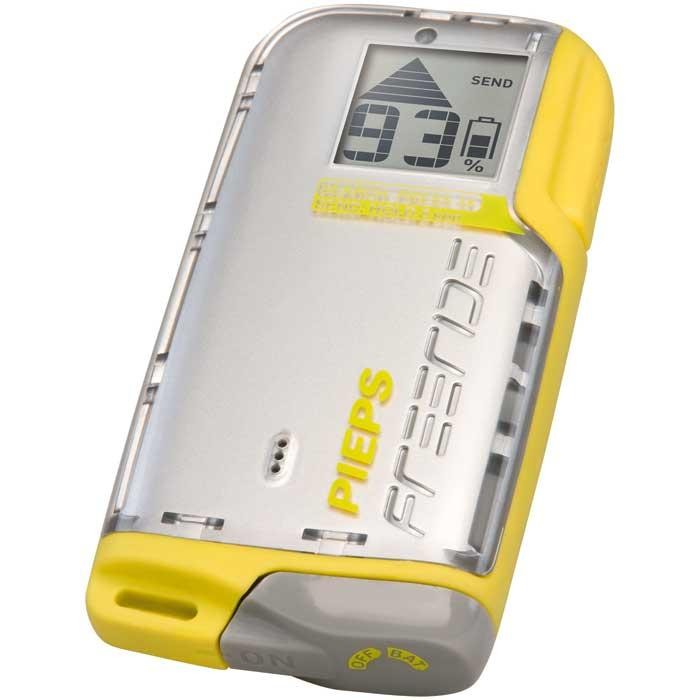PIEPS Freeride Review
Our Verdict
Our Analysis and Test Results
Range
We found the Pieps Freeride to have a functional maximum range of around 34-35 meters. Along with the Arva Evo4 and the Ortovox Zoom+ that was among the shortest maximum range of any of the products we tested.
Ease of Finding a Single Victim
Ease of use while finding a single victim is the biggest downfall of the Pieps Freeride and it was possibly the overall worst performer in this category. Unlike all the others we tested which use either two or three antennas, the Pieps Freeride uses one. This makes the Freeride function similar to an older all analog model, but with the addition of distance numbers. What this means is that the Pieps Freeride takes significantly more practice before most users will be proficient with it. Even with some practice the Freeride had much more lag time while we followed the signal and we found that we had to move more slowly during every stage of the search even when we were more than ten meters away. Functionally the Freeride uses a triangle with five layers that help you to determine signal strength in a very similar manner to an older all analog design, except you don't have to manually dial it down and you have the visual of the numbers rather than just sound.
Ease of Use in Fine Search
During the fine search while bracketing our victim in our side-by-side tests the Pieps Freeride had one of the slowest processors and was one of the slowest products we tested during this stage of the search. Its precision was not far below the majority of the products we tested, but we needed to move more slowly to make sure we wouldn't confuse or overwhelm it.
Ease Of Use In Multiple Burial Situations
The Pieps scored poorly in multiple burial situations. It doesn't have a flagging feature to mask beacons nor an indicator light or an icon to let you know that it is sensing multiple beacons. So only older/standard multiple burial techniques like microstrip searching or the Expanding circle technique can be used in these situations. On top of that, the slow processing speed gets only more bogged down as you add more beacons to look for.
Smart Transmitter Technology
One of the cool things about the Pieps Freeride is that even though it's a more basic model it shares Pieps Smart Transmitting Technology like its more expensive cousins the DSP Sport and DSP Pro. If the beacon is stationary for two minutes, it assumes it's buried. While transmitting, it starts searching for other buried beacons within five or six meters. If it finds one, it alters its transmission cadence to make life easier on the search party.
Other Features
The Pieps Freeride is the smallest and lightest model we tested and is half the size of several of the contenders.
The Pieps Freeride operates on a single AA battery which helps the Freeride be the lightest, smallest product on the market.
Value
At $170 the Pieps Freeride is the least expensive model on the market and nearly half the average price among all we tested. It is harder and takes more practice to search with than any other all digital model out there and takes almost as much practice as an all analog design, making it less ideal for most novice through intermediate users, and still not ideal for even advanced users.
Best Application
The search ability makes this beacon less ideal for most backcountry travelers as their go to product, but because of its price and weight it is good for certain types of users. These user groups could include, children or backcountry ski/snowboard clients who will likely never need to search for another beacon, but need to be wearing one in the event that they need to be found.
Rando/Ski Mountaineering races where wearing a beacon is often mandatory so why not wear the lightest one there is? Its also a great loaner option, to hand out to some of your friends who don't normally go backcountry touring. Its also a great product for a lot of side-country/slack-country/Top-down touring (Or whatever the current hip term might be) users that might not otherwise be wearing one if it was more expensive.
Bottom Line
The Pieps Freeride is a great price; but it's not great for everyone. As we mentioned earlier, it's great for people who need to be found in an avalanche but likely wont be doing much if any searching, or as a good loaner or emergency beacon. Most of all, we think wearing the Freeride is much better than not wearing one at all and that a lot of the general market will fall into this category.
Other Versions
Pieps DSP Pro
- Cost - $420
- Top Pick Award winner for professional quality yet $75 cheaper
- An excellent beacon for amateurs to pros
- Great range and the longest battery life by over 100 hours





